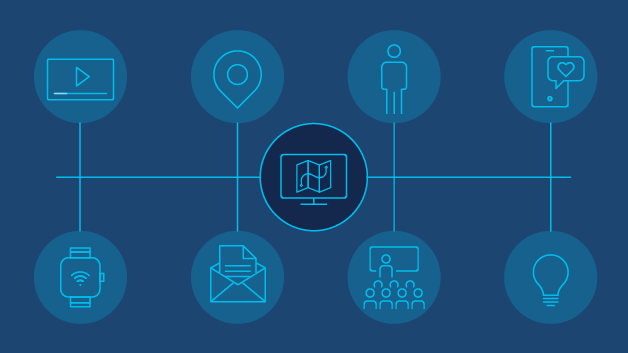Why is location analytics needed?
The potential uses for location analytics are increasing all the time. Companies are using it to promote safety in their environments and to create connected experiences that involve both physical and digital presence.
Within physical spaces, technology can help businesses optimize for safety, user experience, sustainability, and business success. In times shaped by the world health crisis, organizations are placing high importance on maintaining safe environments for people in offices and public spaces.
Real-time data about where people and devices are located and how they're behaving can also help organizations to provide better experiences for the people using their spaces and to keep track of critical assets.
In addition, new technologies such as ultrafast wireless connectivity, artificial intelligence (AI) image analysis, and advanced sensors have added new methods for asset tracking, environmental control, and understanding customer behavior.
Since business competition is increasingly tied to technology, location analytics provides many ways for organizations to differentiate themselves in competitive markets. Physical spaces have untapped potential to drive business success.
What are the main features of location analytics?
Interoperability
Historically, organizations have applied location analytics only to specific business functions and audiences. Newer location analytics platforms aim to solve this problem by making data from all devices and systems available for use by others in an organization.
To increase access to data, location analytics uses IoT technology to connect separate systems. An office window shade might be controlled not just by temperature and light sensors but also by sensors for foot traffic and device usage in the space.
The true potential of location analytics will be fulfilled through software that brings together all location analytics functions, including those from multiple vendors, in a single management interface.
Data collection
At the heart of location analytics is data collected from LANs (local-area networks), environmental sensors, cameras, network equipment, devices such as RFID tags, motion sensors, and telemetry. The data collection is especially beneficial for tracking locations of devices—such as during an inventory of equipment that is distributed across a hospital complex.
Analysis
Once data is collected, it's analyzed and subjected to algorithms or rules designed to promote certain business, safety, or environmental outcomes. For example, patterns identified in customer foot traffic at a retail store could lead to rearrangement of product displays to increase sales.
Customization
Organizations can use their location analytics solutions to create unique content, such as posting real-time statistics on digital signage, based on insights gathered, or pushing custom content to a mobile device. In some cases, the benefits of location analytics may come from applying long-term insights, such as the use of foot-traffic data to redesign a retail space.
